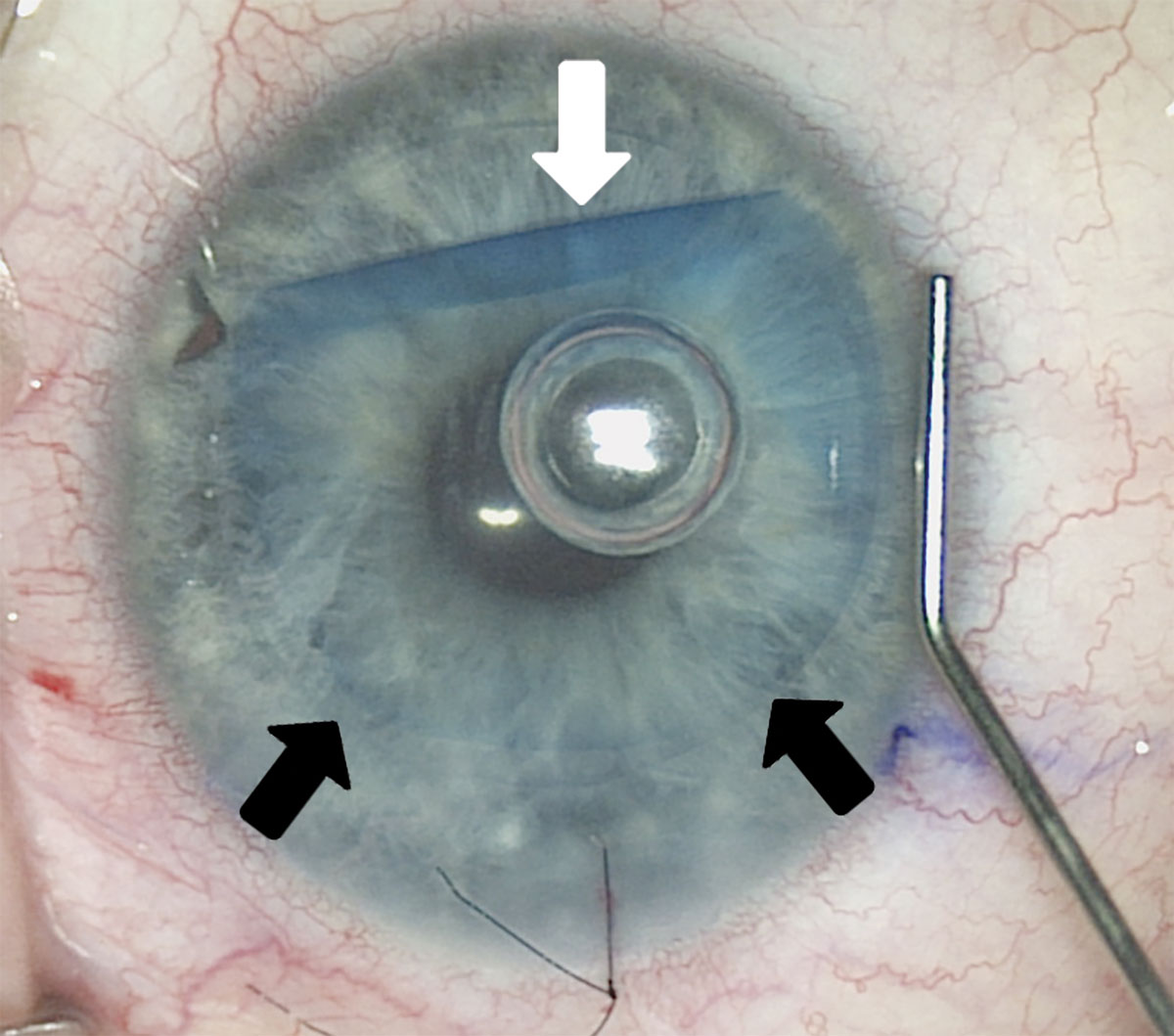 |
|
Graft survival rates, as well as final visual acuity, were also noted to be favorable, the researchers explained in their paper. Photo: Kathleen Kelley, OD, Francis Price, Jr., MD, and Marianne Price, PhD. Click image to enlarge. |
Corneal surgeons have shifted from penetrating keratoplasty to various lamellar procedures for very many diseases requiring a graft, and Descemet membrane endothelial keratoplasty (DMEK) has become a workhorse for conditions like Fuchs’ dystrophy and bullous keratopathy. Still, questions remain about long-term results; most published studies go out to about five years postoperatively. To better understand the durability of this treatment, researchers from Germany recently conducted a 10-year follow up study.
“Our results show that the final visual acuity outcome after DMEK can be estimated at six months after surgery and remains stable for up to 10 years at around 0.1 logMAR, considering all eyes, including those with retinal comorbidity,” stated the researchers in a paper published in Cornea last week.
The researchers assessed 54 eyes (38 DMEKs and 16 triple-DMEKs) five years after surgery, the minimum follow-up period needed to meet the criteria for this long-term study. Only 37 eyes (69%) were available for follow-up between years eight and 10. The mean age for patients at the beginning of the study was 68.9 years. All eyes began with a mean baseline best-corrected visual acuity of 0.6 ±0.3 logMAR, or approximately 20/80 Snellen. They were able to achieve 0.1 ±0.2 logMAR at six months postoperatively, or approximately 20/25, which was maintained throughout the one-, five- and 10-year follow-up periods.
When analyzing each patient’s endothelial cell density, the researchers discovered a 26.9% loss in the first year and an 4% average annual loss thereafter, for a final result of 61% loss as the end of the 10-year period. However, there was no correlation between this finding and best-corrected visual acuity scores.
Other measurements analyzed included central corneal thickness, graft survival rate and the incidence of open-angle glaucoma. “This study shows that BCVA is still excellent 10 years after DMEK, although endothelial cell density decreases steadily, and central corneal thickness consecutively increases and reach preoperative values,” mentioned the researchers in their paper on this study. “The graft survival rate was excellent over 10 years. DMEK and Triple-DMEK did not induce chamber angle synechiae. The significant increase in open-angle glaucoma over the long follow-up most likely reflects the risk of developing glaucoma with aging.”
| Click here for journal source. |
Teubert S, Borgardts K, Steindor F, et al. Ten-year follow-up after Descemet membrane endothelial keratoplasty. Cornea. October 29, 2024. [Epub ahead of print]. |


